Lyric Opera and Joffrey Ballet join forces for a stylish, imaginative “Orphée”
Dance would appear to be the thing these days at Lyric Opera.
On Saturday night the company opened its season with Christoph Willibald Gluck’s Orphée et Eurydice, the production marking the debut collaboration between Lyric Opera and the Joffrey Ballet.
And if the start of the opera season wasn’t big or flashy enough, the company announced on Friday that the Joffrey would become a resident company at Lyric beginning in 2020, moving from the Auditorium Theatre, its home for the past two decades.
With Joffrey running a full fall season just like Lyric Opera, one can only imagine the challenges involved in working out the logistics of competing performance schedules as well as rehearsal time, backstage facilities, etc.
But that’s for another day. The main order of business Saturday at the Lyric Opera House–bafflingly and redundantly rechristened from the Civic Opera House over the summer–was the opening of Gluck’s opera in a new production by the Hamburg-based American choreographer John Neumeier.
Premiered in Vienna in 1762, Orfeo ed Euridice, is one of the few post-Baroque, pre-Mozart operas to maintain a hold in the repertory. In the original fable, Orpheus is pining for his deceased wife, Eurydice, when the god Amour appears and offers to rescue her from the underworld — but only if Orpheus promises never to look upon her once she has returned. At first overjoyed at their postmortem reunion, Eurydice soon wonders why Orpheus seems so distant and avoids her gaze. After much recrimination the distraught Orpheus gives in, at which Eurydice dies again, this time for good.
But wait. Ever the practical businessman, Gluck rewrote the tragedy’s ending to provide his Enlightenment audience with a more optimistic coda, as Amour takes pity on the lovers and brings Eurydice back to life again so the couple can presumably live happily ever after in suburban Thrace.
Gluck’s opera exists in a variety of editions; Neumeier has opted for the 1774 “Paris version”– Orphée et Eurydice–which is being heard for the first time at Lyric. In addition to translating the opera into French from Italian, Gluck humanely reassigned the title role to a tenor rather than a castrato. The Paris revision also added several dances for the Terpsichorean-obsessed French, which makes it suitable for the current balletic collaboration. (Lyric’s show also dovetails serendipitously with this fall’s early opera emphasis–primarily John Eliot Gardiner presenting all three Monteverdi operas at the Harris Theater next month.)
As director, choreographer and production designer, Neumeier adds his own glosses to the staging. This coproduction with Los Angeles Opera and Staatsoper Hamburg repositions the action to a modern-dress setting. In the exposition, which takes place during the Overture, Orpheus has transitioned into the director of a contemporary ballet company and Eurydice is his wife as well as the prima ballerina. After a quarrel between the couple, she runs out into the street, is struck by a car and killed, launching the narrative.
Neumeier’s stark, rotating set designs–realized with Heinrich Tröger–are striking and imaginative. The staging makes effective use of Arnold Böcklin’s celebrated painting, Isle of the Dead, the gloomy Stygian visual nicely contrasted with a tiny bedroom set that evokes Edward Hopper’s sunlit interiors.
There are a few missteps. While the opening scene with the full 43-member Joffrey company rehearsing in Orpheus’s studio was clearly meant to wow, it’s a bit visually overstuffed. Eurydice’s fatal accident takes place so quickly and out of the blue that a good chunk of the audience only seemed to belatedly realize what happened.
Recasting Amour as a tomboyish assistant concerned with Orpheus’s well-being was a dubious device. As costumed, Lauren Snouffer bore a remarkable resemblance to Anybodys, the Jets’ female hanger-on in the film version of West Side Story; her pantomimed shadowing of Orpheus’s moods quickly became tiresome.
Textually, Neumeier generally adheres to the Paris edition, though some of the more florid aria versions for Orpheus appear to hail from the Italian original. In synch with our postmodern age, Neumeier restores the myth’s tragic ending, which was handled touchingly, even if it goes against Gluck’s own ill-advised revisionism. Finally, even with some dances cut, the opera’s finale felt unnecessarily padded, as the extended dances delayed the denouement with one ballet sequence too many.
But for the most part, Lyric’s Orphée et Eurydice works extraordinarily well, with Neumeier’s Gesamtkunstwerk control fusing the music, dance and dramatic elements into a cohesive, fluid and effective whole.
The modern tendency is to cast Orpheus as a countertenor, as was done in Lyric’s last staging a decade ago with David Daniels taking the role. Adhering to Gluck’s Paris preference, Lyric has opted for a tenor this time, with Dmitry Korchak making his company debut.
Even with its tiny cast of three singers, Orphée is close to a one-man show for much of the evening, and Korchak impressively fulfilled the assignment both vocally and dramatically. The Russian tenor’s beefy voice and somewhat grainy timbre takes some getting used to, and at times one wished for more of the tonal elegance and fluency between registers of the classic haut-contre the role was (re)written for.
Yet Korchak wielded his ample instrument with finesse, attacking top notes with striking accuracy. He displayed surprising dexterity in the coloratura roulades of “L’espoir renait dans mon ame” and deftly handled the challenge of finding elegiac sadness within the jaunty musical line of “J’ai perdu mon Euridice.” The singer also showed impressive acting chops in the role of choreographer, moving among and between the ballet dancers with a professional’s assurance.
Andriana Chuchman proved ideally cast as the doomed Eurydice. In addition to making an attractive couple with Korchak’s Orphée, Chuchman sang with bright tone and agility, and was always dramatically credible, even in the repetitive “Why are you not looking at me?” inanity of Act 3. A rare operatic soprano with dance experience, Chuchman handled the simpler ballet movements assigned to her with grace, blending easily with the ballet corps.
Lauren Snouffer was an admirable Amour, handicapped somewhat by the ill-advised revision of her role. The soprano sang with worthy strength and flexibility though her words were too often indecipherable, as heard from the extreme right side of the house.
The ballet element is coequal with the singing in Orphée–if not dominant in this staging–and the Joffrey troupe appeared up to all the demands of Neumeier’s mutable choreography. Those more knowledgeable about dance than myself can weigh in on the finer technical qualities of the Joffrey performance; but from the violent gyrations of the Furies to the Apollonian grace of the Blessed Spirits, the entire Joffrey ensemble appeared to serve the score and Neumeier’s choreography with ceaseless energy and astounding precision.
A great deal of the evening’s success was due to the musical direction of Harry Bicket, who was back in more congenial repertoire after last season’s hapless Carmen. Maintaining close synchronization with the dancers as well as the singers, Bicket drew supple, stylish and idiomatic playing throughout. The Lyric Opera Orchestra, brought out all the spare, elegant grace and iridescent beauty of Gluck’s music, with an especially gorgeous rendering of the “Dance of the Blessed Spirits.”
The Lyric Opera Chorus is entirely offstage in this production, but under the direction of Michael Black, made their presence felt with refined and characterful vocalism in their various guises, both hellish and heavenly.
Orphée et Eurydice runs through October 15. lyricopera.org
Posted in Uncategorized
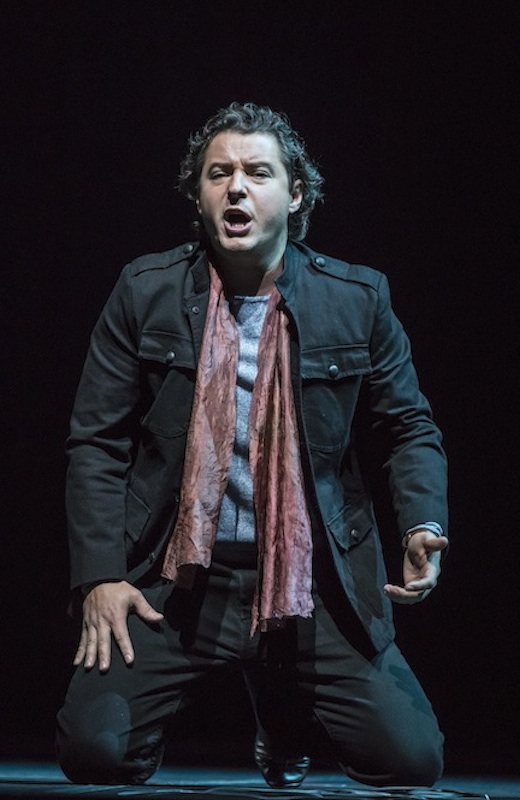
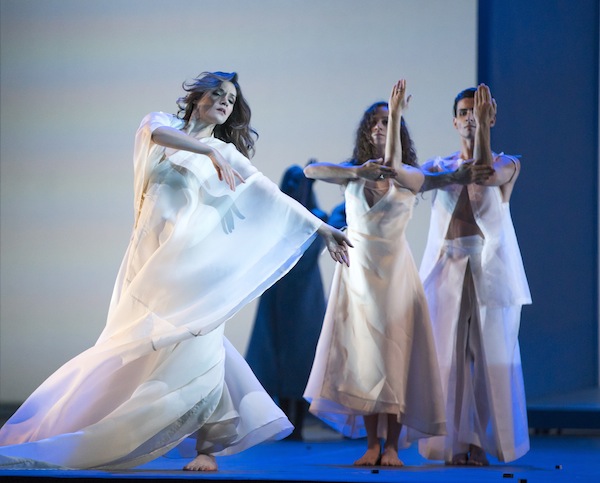
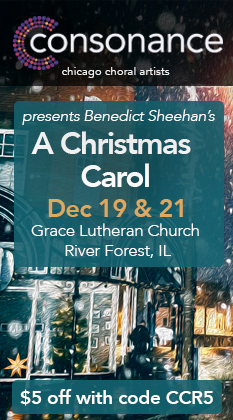

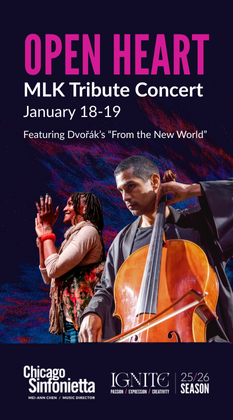
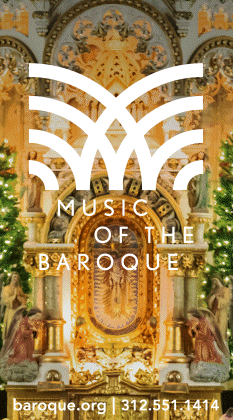

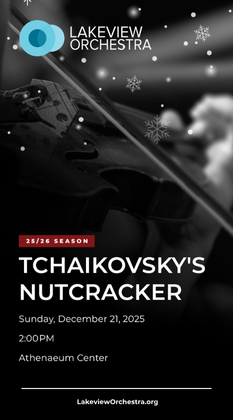
Posted Sep 24, 2017 at 6:36 pm by lorin pritikin
I always enjoy your reviews–much more than Von Rhein. I was at opening night last night. While I enjoyed the spectacle, I did not think that any of this production worked as far as being moving or even understanding the story.
You did mention that accident happening so quickly that few knew what happened–if I hadn’t read the program first, I would have thought that the noise signaled something falling from a set. It was ridiculously staged. In addition, I was surprised that you didn’t mention something that I heard so many in the audience talking about as I walked out for intermission and I agreed with them: the light bouncing off the mirrored set blinded many of us in the audience.
While I thought it was a special treat to get a Joffrey ballet for the price of my opera ticket–and I don’t often get to the ballet–I thought that while the production was certainly ambitious, it compromised the opera.
I did love the singing and much preferred a tenor to the prior countertenor–Korchak did a great job. Thanks for your great reviews–even though I disagreed with you on this one. I am a big fan and have written you before.
Posted Sep 24, 2017 at 8:08 pm by Lawrence A. Johnson
The precarious shaking of the mirrored panels in Act 1 struck me more than the light reflecting off of them, which only hit me in the face briefly. That was likely due to my being situated on the far right side of the house–one advantage of the lousy seat.
Posted Oct 07, 2017 at 12:04 pm by Rebecca Saunders
I was thoroughly enraptured with Korchak’s performance which I found rich, masterful and admirably balanced between the simultaneous restraint and passion called for by the opera. Michael Black’s chorus also deserves high praise for yet another gorgeous performance.
I too found the opening ballet sequence chaotic and the crash scene ineffectively staged and timed, but contrary to previous commenters, loved much of the shifting triangulated stage set, including the mirrors, the revealing if momentarily blinding nature of which echoed brilliantly with the narrative motif of the snare of the image and the fatal gaze.
What most bothered many in my section (center front balcony) was the amount of the opera shunted off to the stage extension at left and barely visible from a significant portion of the house. It felt as if the director staged the opera for the ballet and that the vocalists were an afterthought tacked on in a corner. This was a quite astonishingly weak decision in an otherwise glorious performance.
Posted Oct 07, 2017 at 2:08 pm by Donald Nathan
I was fortunate to land a discounted cheap seat. And the announcement that “Great Performances” was taping created a flurry of excitement around me.
Unfortunately, that was the last of that. I’m not a dancer (or aficionado) but it was confusing, and distracting…frankly showing the conceipt of the director/choreographer. It probably was well danced but how it furthered the opera was mystifying. And doesn’t the opera have a happy ending exulting the “triumph of love”? If she stays “dead”, how is that a “triumph”? How is Amor’s final statement (okay, the “stage manager”) about not doubting her “power” make any sense?
In the end, it seemed to be a modern dance exercise with incidental opera wedged within. And unfortunately (at least my evening) the three soloists disappointed. The tenor was not pleasant. And neither was Chuchman. I’m not sure what this will say to the world regarding “Great Performances” but it was not great opera.
Posted Oct 10, 2017 at 1:06 am by Peter DG
We just came home from the Monday 10/9 performance and feel the production didn’t live up to all the hype. The singers, chorus and orchestra were fabulous, but the dancing was kind of overblown – way too long and way too repetitive. I wonder if this production was true to Gluck’s Paris score or expanded to show much more dance. Flooding the stage with dancers seemed excessive and distracting. Also the “filming” was very distracting with a camera car going back an forth across the front of the stage. At first sight it seamed a stray black dog ran past.
As to previous comments about the mirrors and lights: we were front and center and the lights were not a problem. The mirrors definitely added to the visual interest but the vibration of some mirrors was a problem. The three lead singers at our performance were great.
Posted Oct 11, 2017 at 12:09 pm by Terri Hager
I attended Oct. 9 and was completely enchanted by most of the production. I was confused by the altered story at beginning and end (although the ending does make more sense than Eurydice returning to life for a second time), I found the reflection of light in the mirrors briefly blinding, the denouement was a little long, and I found Amor’s bluejeans and hoodie a little much.
All the rest really worked for me. The choreography and direction were amazing, the blending of dance and music was stunning, and the triangulated moving sets in Act two were very effective. The Act I scene in the Underworld was my favorite (what marvelous furies and demons!), and the achingly sublime music in the Elysium Fields scene coupled with stunningly beautiful dancing left me and those around me breathless.
Kudos to John Neumeier for the astonishingly wonderful choreography, as well as wonderful direction, set, and costume design, to Harry Bicket and Michael Black for orchestra and chorus direction, and to the 3 marvelous singers.